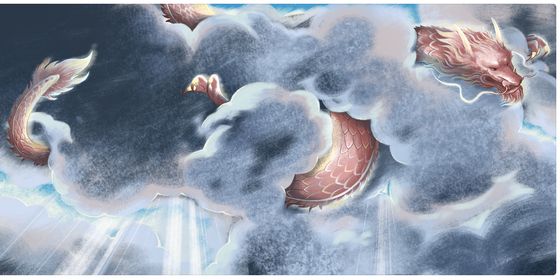How the humble “pingfeng” screen came to adorn everything from cave dwellings to the emperor’s throne
In 1922, British writer Somerset Maugham published his best selling book On a Chinese Screen, documenting his 1,500-mile trip along the Yangtze river two years prior. The curious title, though, referenced not the stunning vistas he saw on his epic journey, but a piece of traditional Chinese furniture, known in Chinese as 屏风 (píngfēng). This was at a time when the chinoiserie aesthetic (which first boomed in the 18th century) was seeing a revival in Europe, and screens were popular again.
But while Europeans in the early-20th century desired these screens for decoration, they had in fact played an important role in ancient Chinese people’s political, cultural, and daily lives.
Originally, 屏风 were vertical objects that could offer protection from the wind—the name could, literally, translate to ”windshield.” Later, pingfeng were also often used to divide a room, offer privacy (or opportunities to eavesdrop), or even show off the owner’s power and wealth with their elaborate designs.
It’s widely believed that the prototype of the screen was called 坫 (diàn), a simple piece of furniture made of wood and grass that northern Chinese, who lived in partially underground dwellings, put in front of doorways to keep out the cold. But by the Zhou dynasty (1046 – 256 BCE), they began to take on symbolic meanings. The Book of Rites (《礼记》) records that “The emperor stands in front of the screen (天子当依而立),” with 依 (yī) short for 斧依 (fǔ yī), the wooden screen fixed on the back of the emperor’s seat at the court.
At that time, screens were closely associated with imperial power. According to Rites of the Zhou Dynasty (《周礼》), only the emperor could place a screen facing the front door. Confucius supposedly once criticized Guan Zhong (管仲), a powerful politician of the Qi State, for violating the norms of etiquette,because Guan had once set a screen facing his door.
At that time, elite nobles also used screens in their homes to divide rooms into individual spaces for different classes of people. According to the Records of the Grand Historian (《史记》), by Sima Qian (司马迁) of the Han dynasty (206 BCE – 220 CE), when Lord Mengchang (孟尝君) met guests at home, he would have his servants sit behind his screen and write down their conversation. Because the servants were from a lower class, the customs of the time meant they could not be present with the nobility—sitting behind the screen was the only way they could stay in the nobleman’s living room.













